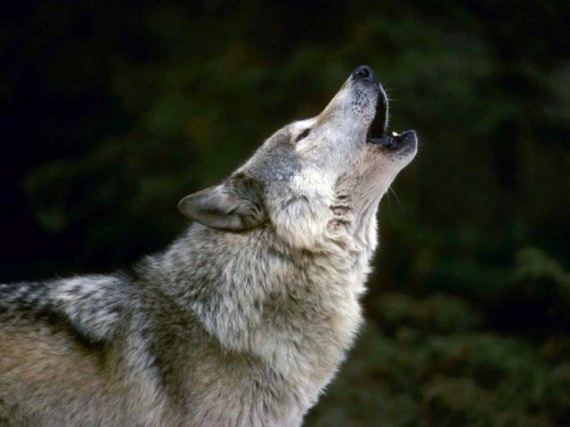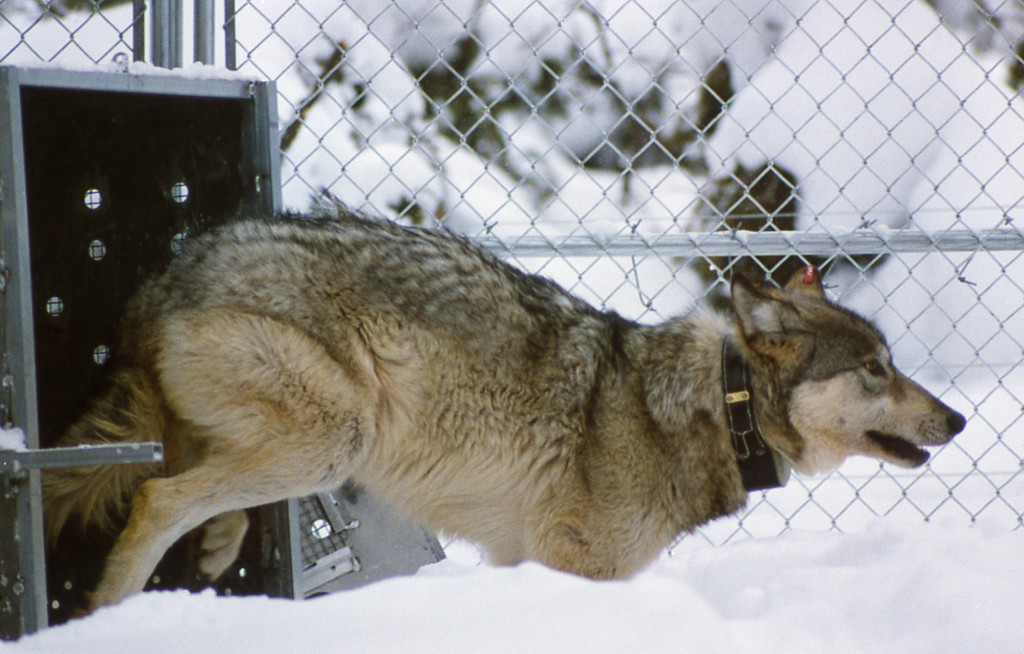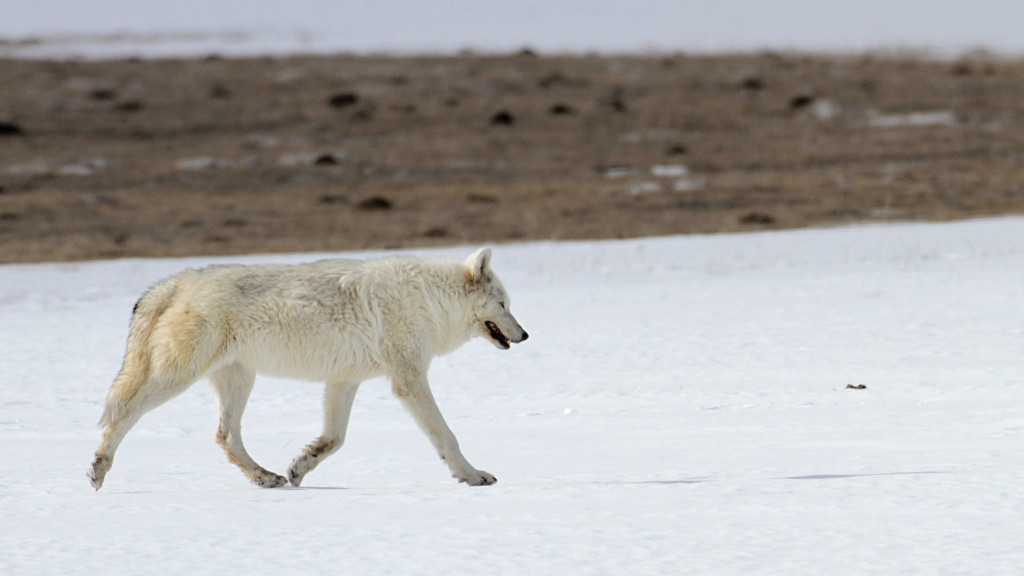In recent memory, wolves have only been living in Yellowstone National Park for roughly 20 years, but their real history in the area is much longer.
They—gray wolves—were around, of course, a long while before the Park came into being in 1872. And they persisted for decades after, into the late 19th and early 20th centuries, under threat of extirpation. But by 1926, they were driven out of Yellowstone. They were endangered everywhere.
After the Endangered Species Act was ratified in 1974, the work began to reintroduce wolves to Yellowstone National Park. They would not return to the Greater Yellowstone Ecosystem until 1995-6.
Renée Askins, one of the key players in restoring wolves to Yellowstone National Park, made reintroduction one of the principal aims of her naturalist career. She founded the Wolf Fund for that express purpose; it ended when wolves were reintroduced.
But reintroducing wolves is only one facet of her story, related in Shadow Mountain: A Memoir of Wolves, a Woman, and the Wild. In her writing, Askins gets at something even more fundamental.
Askins readily admits the influence working with wolves has had on her life. Her work (both this book and the Wolf Fund) began, in essence, with one wolf she working at Wolf Park in Battle Ground, Indiana, a female named Natasha:
Natasha, like most captive-born wolves, was destined for a life behind chain-link fences, both because she had been habituated to humans and because she had not received the necessary stimulus and training in her formative months for survival in the wild. At the same time, like most wild creatures raised in captivity, she would never be “tame” in the sense a dog or cat is tame. She was wild by nature (and by genetics) and no veneer of domestication would ever change that—she would never be, nor want to be, a dog. She was a wild thing and from the very beginning she hated confinement” (17).
The bond is solid. Askins dedicates Shadow Mountain to her and it was, in part, what happened to Natasha that drove both her career and the writing of this memoir.
In brief, Natasha was moved away from Wolf Park and consigned to a life of captivity. And it was then Askins made an important vow: “You will not be forgotten, little one, what you have taught me will make a difference. I promise you it will make a difference “(20).
Undoubtedly, Askins kept her promise.
Although the main drama of Shadow Mountain lies in the battle to reintroduce wolves to Yellowstone, the book itself encompasses much, much more. Skillfully written, with liberally sprinkled epigrams from the likes of Joseph Campbell, Peter Matthiessen, and Rainer Marie Rilke, Shadow Mountain is Askins’ story as much as it is the wolves’ story. And from the get-go, it’s easy to see why Askins was drawn to Natasha and her ancestral plight. For instance, here is how Askins describes herself before she even became involved in wolf ecology:
It was the spring of 1978, two years before my experience at Wolf Park. I had just finished my first year of college, and I set out to see the West with a backpack, sleeping bag, pair of binoculars, bird book, virtually no money, and a case of wanderlust as ripe and hungry as a fine, dark wine (23).
Besides autobiography, Askins also dispenses wisdom gleaned from her life’s work, running the gamut from ecological insights to broader opining on the nature of existence. The book is shot through with evocative eloquence:
Dogs can lead us to the bridges over the chasms of the either-or. They can teach us the virtue of our vices and the vice in our virtues. They remind us that the imperfect is our paradise. A fallen tree, a barbed-wire tangle, a stream stone traverse, a daring leap—we need only follow them, for it is we, not they, who have forgotten how to navigate the nature of the “gray areas.” We are of that nature, not apart from it. We survive because of it, not instead of it. (269).
If you’re looking a singular book that gets at the impetus for returning wolves to Yellowstone National Park, as well as one that beautifully articulates the human side of the struggle, you would do well to read Shadow Mountain.
You can order Shadow Mountain: A Memoir of Wolves, a Woman, and the Wild here.
 Yellowstone Insider Your Complete Guide to America's First National Park
Yellowstone Insider Your Complete Guide to America's First National Park








You must be logged in to post a comment.